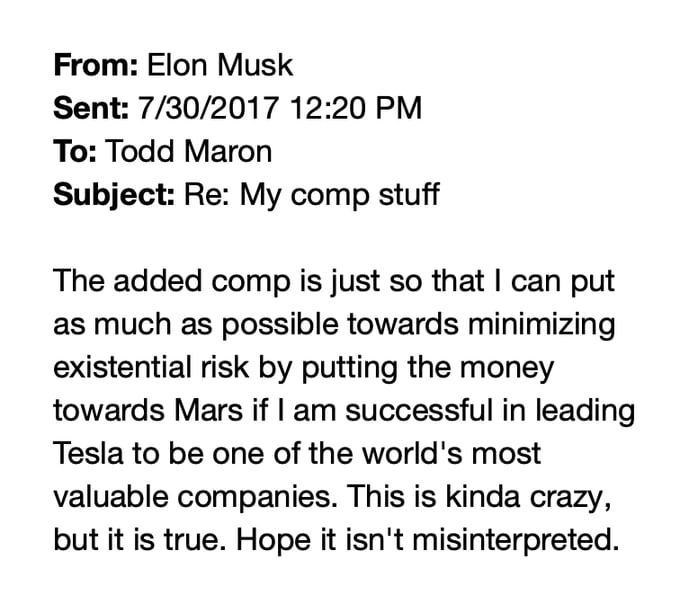A recent tweet by Internal Tech Emails shared an email from Elon Musk discussing a compensation package, with Musk citing the mitigation of existential risk through Mars colonization as a reason for the package's structure

Source: This tweet from Internal Tech Emails [@TechEmails] on Twitter, pulling from Richard J. Tornetta v. Elon Musk (2024) and confirmed by Elon Musk himself in a brief but validating reply.
Musk's attempt to frame his compensation through the lens of existential risk is particularly jarring given the context of his past philanthropy. While he has made notable donations, such as a gift of Tesla shares worth around $5.7 billion to charity, these acts are dwarfed by the scale of his wealth and proposed compensation.
What are your thoughts on this? It's disheartening to see powerful figures appropriating EA concepts, seemingly to defend personal gains. From Musk's email now to SBF's past actions, it seems like a trend where the language of EA is co-opted, while actions fall short. Does this dilute the EA message for you too?

My personal take is that Musk is fairly mysterious. Hence, I don't think there is sufficient evidence that he just says these things for personal gain?
I don't mean this to defend him, to the contrary. It makes the world more uncertain that one the most powerful persons has such an insrutable personality. I think it would be worth foregoing Musk's upside potential for this world, if he were just more boring and predictable.
He doesn't seem super mysterious to me - I think he's motivated by a combination of genuine intent to make the world do better and ego, with a fair bit of room for arguing over which you think is the greater factor (I actually think the former).